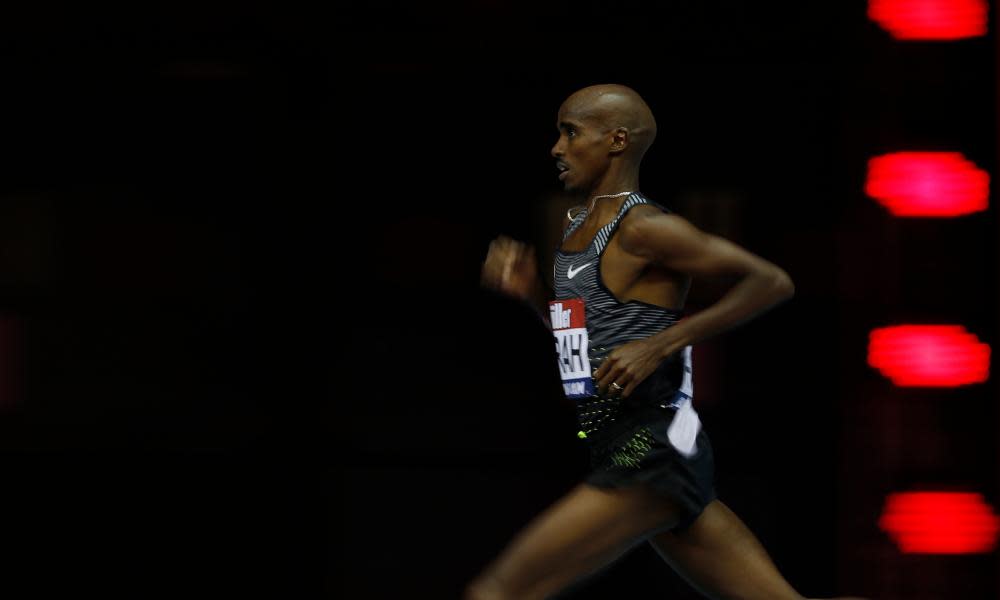Mo Farah, me and L-carnitine | Oliver Duggan

For six months last year my kitchen looked more like a pharmacy than a larder. I was preparing for the Cent Cols Challenge, an endurance event of epic proportions, and my training regime included a cocktail of performance-enhancing supplements. Alongside two to seven hours’ training a day, I was swallowing – on and off – half a dozen tablets and powdered drinks. This weekend one of them was named on the front page of the Sunday Times.
Alberto Salazar, the coach of the double Olympic champion Mo Farah, has again been accused of breaching anti-doping rules, allegedly using prohibited levels of infusions to boost the testosterone of his athletes at the Nike Oregon Project.
The claims instantly put pressure on UK officials, who employ Salazar as a consultant, and his athletes. Farah, who has been forced to deny doping in the past, was again forced to make an announcement. He described the story as “deeply frustrating”. He was, he said, a “clean athlete who has never broken the rules in regards to substances, methods or dosages”.
And therein lies the problem with modern doping: it is so close to legality, so deep in the grey area, so intricate in its abuse of the system, that clean athletes must detail their substances, methods and dosages, and amateurs must check the pantry every time a Sunday paper has a scoop.
Among the allegations against the coach, which include ignoring medical advice when recommending supplements and “unconventional” use of prescription medicines, is the claim that he used improper amounts of the amino acid L-carnitine to boost performances.
Salazar has again insisted he has not broken any rules. The substance is not banned, which is a relief because I have a not-insignificant stockpile of the stuff at home and am not looking for employment with the Russian Olympic team. But its dosage is strictly controlled by anti-doping rules, limited to an infusion of 50ml in the space of six hours. The US anti-doping body, Usada, allegedly concluded in the report leaked to the Sunday Times that Salazar’s carnitine tea – given via intravenous drip – “almost certainly” breached that limit.
My own experience with carnitine is a little different. The substance, I was told in the run-up to my own challenge, is usually administered orally at a dosage of 2,000mg a day (well within the legal limits) and has emerged as a favoured supplement of professional and amateur endurance athletes in the past two years. My supply came via a nutritionist, who advises a handful of pro cyclists, and was on a list of performance aids that included magnesium to reduce the risk of cramping, and beta alanine to buffer lactic acid. (I worry that “supply” makes it sound as if I picked it up from the tinted rear window of a VW Golf late at night in a multi-storey car park. I did not. It came in the post, in glossy packaging, delivered to the office.)
But it’s the potential benefits of carnatine that, if the science rings true, really stood out. Created naturally and boosted by supplements, it ferries fatty acids into cells’ mitochondria to be converted to energy, and transports metabolic waste – such as lactic acid – out. Put more simply, carnitine delays fatigue and helps burn fat. If you’re an endurance athlete, that’s the holy grail of supplements, which is presumably why Salazar has been linked with the substance for years.
According to reports in March 2015, he ordered thousands of pounds’ worth of the stuff for Project Oregon after discovering it can boost performance by up to 11%. Nottingham University had published the results of a study that found carnitine supplements, when administered to athletes orally, contributed to a dramatic improvement in performance in three to six months. When taken via intravenous drip, improvements were visible in just five hours.
I noticed a significant improvement in my own abilities in the three months I was taking carnitine. I rode faster and for longer than I ever had before, and went on to complete the Cent Cols Challenge with only a few mental and physical breakdowns. But I was training for more than 20 hours a week. I had quit alcohol and cut down on fatty foods. I was supplementing my diet with protein powders, vitamins and impossibly green smoothies. Without a scandal-dogged coach to keep track, it’s hard to say it was carnitine alone that built my success.
And so it continues to divide the endurance cycling and running community. For some, the science doesn’t quite check out: there haven’t been enough studies, and it’s often hard to see exactly what causes enhanced performance when athletes are on multifaceted training and diet plans. For others, the supplement trend is a step too far from the origins of sport, when grizzly-faced men would batter themselves, running too far or climbing too high fuelled by puddle water and the promise of glory.
For me, carnitine continues to appeal. But as yet another doping scandal breaks around the modern heroes of sport and the grey area of performance enhancement expands even further, its appeal has changed. The boxes in my home look less like the virtuous health boost they did last week, and more like my own personal slice of scientific abandon. With each revelation, doping is getting closer and closer to home.

 Yahoo News
Yahoo News 
